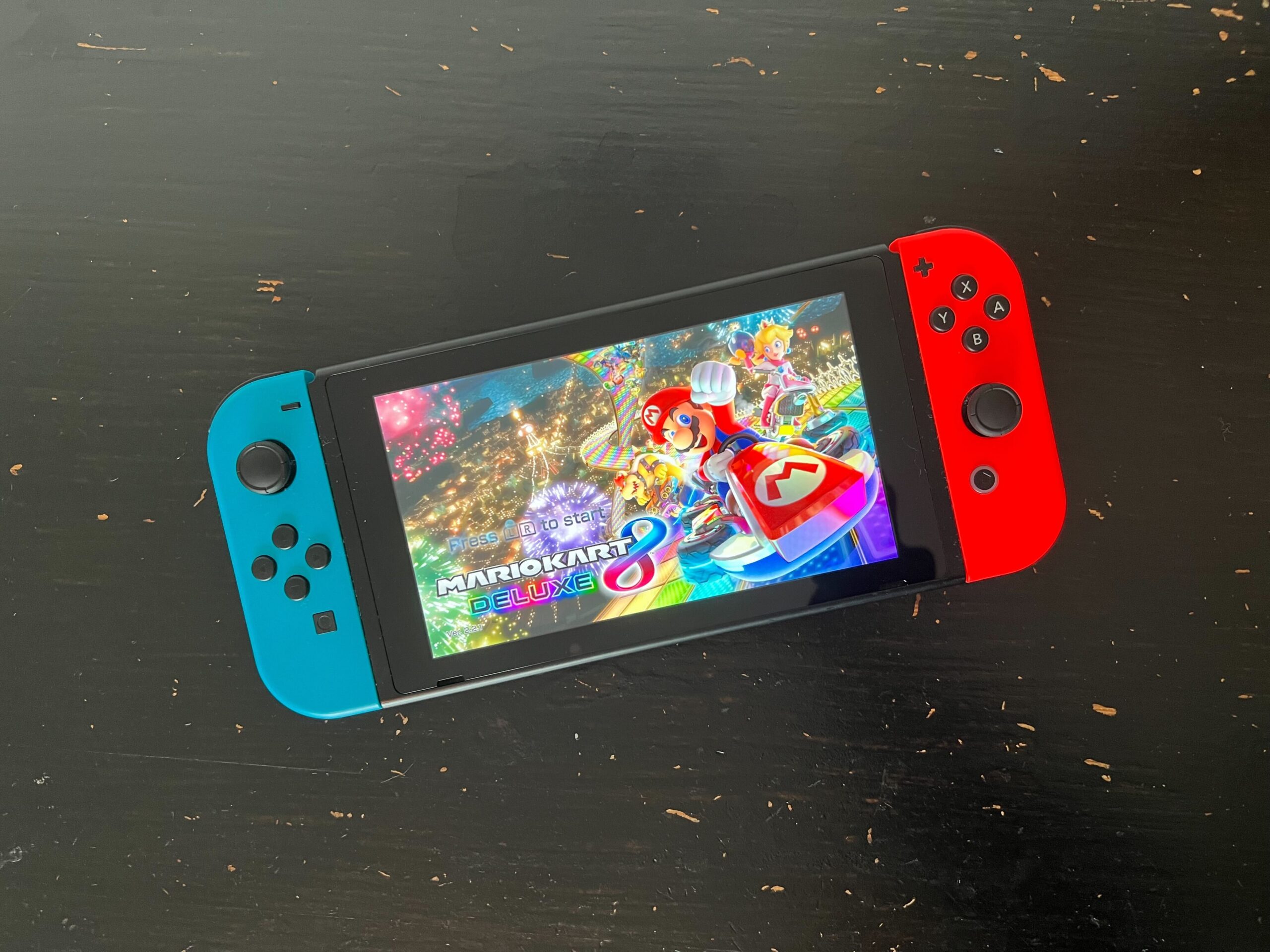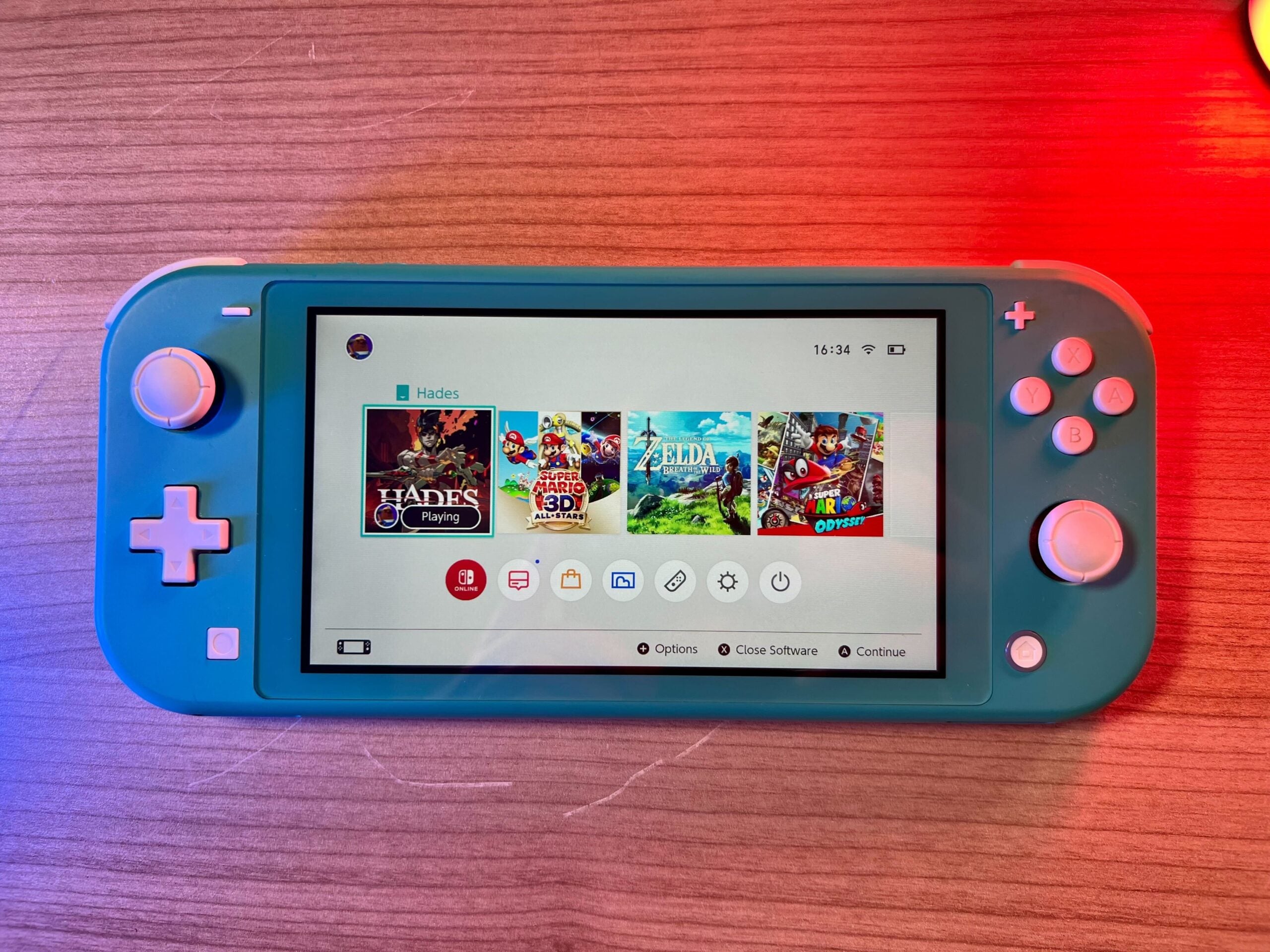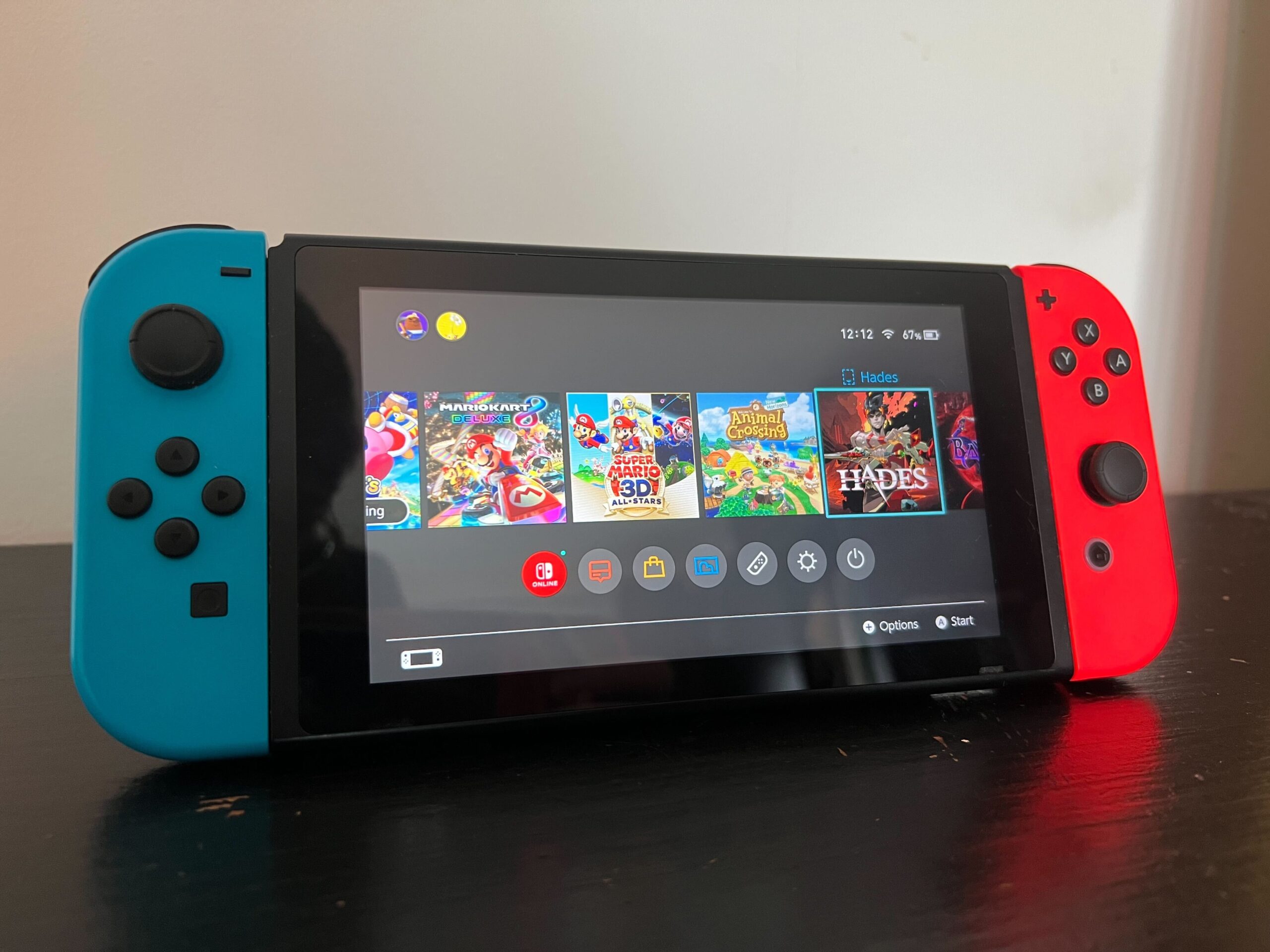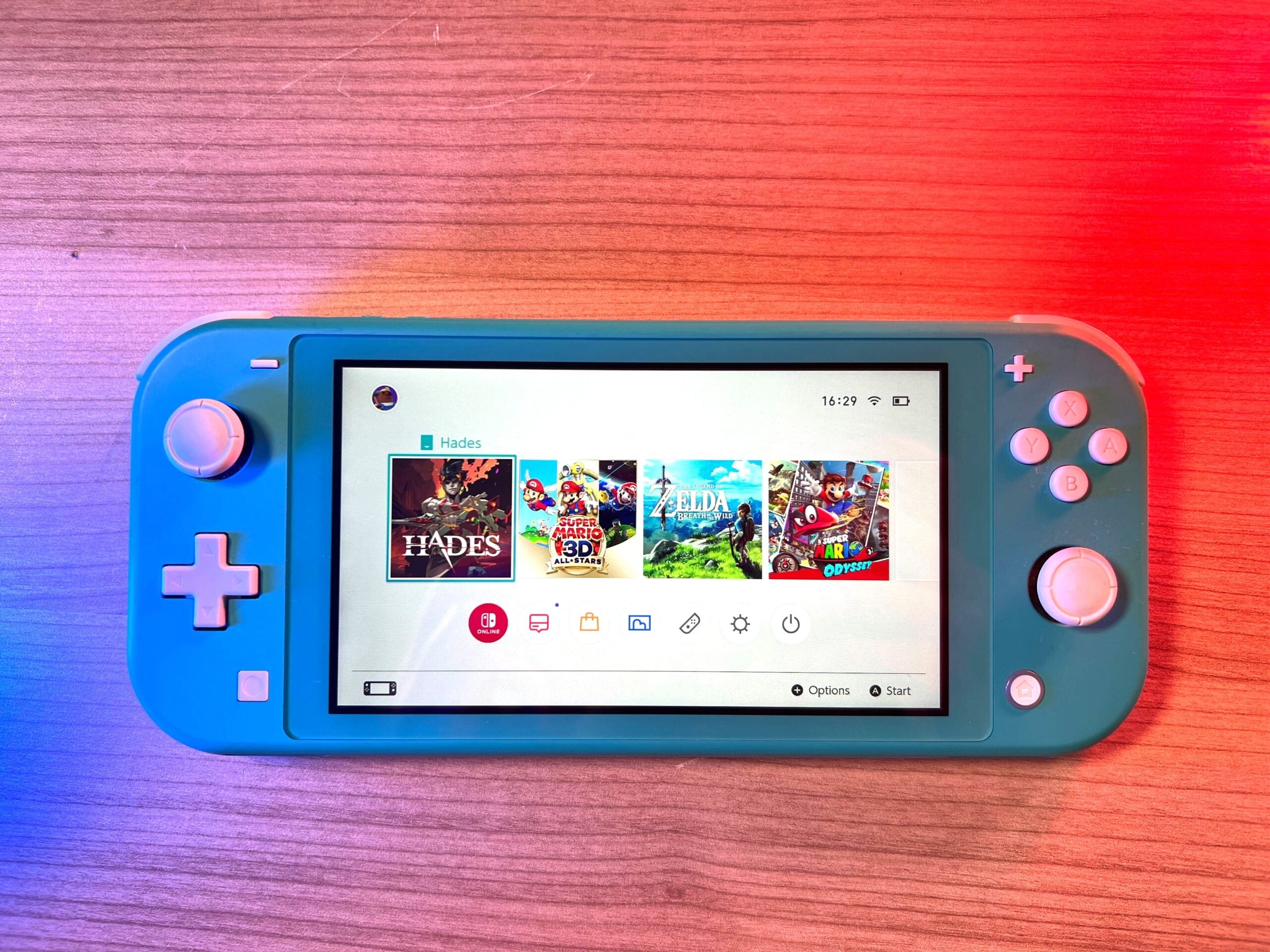While we patiently wait for updates on the upcoming Nintendo Switch 2, we’re looking back at the original Switch consoles, as both still represent solid gaming options in 2025.
We gave the handheld Switch Lite a four-star rating, concluding it’s an “excellent portable console” for “on-the-go” gaming, while the Nintendo Switch was awarded a near-perfect 4.5-star rating, and hailed as “an excellent device”. But how do the two really differ in terms of their specs, game library and design?
Keep reading to see who comes out on top in Nintendo Switch vs Switch Lite. You can also see how the consoles rank in our best gaming console list too.
Pricing and Availability
The Nintendo Switch has an RRP of £259.99 which is slightly cheaper than it was upon its launch back in 2017. Not only can you find deals or bundles for the console, but considering the Switch 2 is expected in the coming months, we would expect this price to drop even further in the near future.
The Nintendo Switch Lite is the cheaper of the two, with a starting RRP of £199.99/$199.99. As an older console, it’s not unusual to find deals for the console, plus bundle offers which help you save money on any extra accessories.
Design
- The Nintendo Switch has detachable Joy-Cons while the Switch Lite’s controllers are fused to the body of the console
- Both consoles support Bluetooth and include a 3.5mm audio jack, USB-C and SD ports, although the Nintendo Switch boasts an HDMI cable and three USB-A ports too
- The kickstand of the Nintendo Switch is flimsy and limiting
The most obvious difference between the Nintendo Switch Lite and Nintendo Switch is that the latter has removable joy-cons while the former’s are fused to the console.


The Nintendo Switch Lite is designed with solo and handheld gaming in mind whereas the Nintendo Switch is a more versatile console and can be played on a TV, in tabletop mode or handheld. It’s worth noting that the Switch’s kickstand is very narrow and flimsy and difficult to use when not placed on a solid surface.
Nintendo updated both its Switch and Switch Lite to support Bluetooth, which allows you to connect the console to wireless headphones. Otherwise, the two consoles also feature a 3.5mm audio jack for wired connections if you’d prefer.
Speaking of ports, the Switch boasts a higher number than its counterpart. While both include a USB-C and SD card slot for expanding storage, the Switch also includes a HDMI cable, three USB-A ports and a dock for connecting the console to the TV.
Even so, the Switch does lack an Ethernet port, so if you have a poor internet connection then it may be worth considering the Nintendo Switch OLED instead.
Winner: Nintendo Switch


Screen
- Both consoles have a 720p resolution when in handheld mode
- Docking the Nintendo Switch raises the resolution to 1080p
- The Nintendo Switch Lite has a smaller screen at 5.2-inches compared to the Switch’s 6.2-inches
At 6.2-inches, the Nintendo Switch sits firmly in-between the seven-inch Switch OLED and the 5.2-inch Switch Lite.
Both the Switch and Switch Lite have a 720p resolution, however we found that since the Lite is smaller which means the pixels don’t need to be stretched out as much as the standard console, the display looks slightly clearer.
Having said that, when the Switch is docked its resolution cap rises to 1080p which, although is a welcome boost, undoubtedly still looks dull compared to the Switch OLED.
Winner: Nintendo Switch Lite


Battery Life
- The Nintendo Switch offers around four to nine hours of battery life while the
- Battery life on the Switch Lite ranges between three to seven hours
- Fan noise is noticeable but not distracting with the Switch Lite
It’s difficult to determine the battery life of a games console as there’s a number of factors which affect its charge, such as the game type and screen brightness.
We found more intensive titles, such as Super Smash Bros Ultimate and The Legend of Zelda: Breath of the Wild offered around four hours of battery on the Switch Lite while less intensive games such as Untitled Goose Game squeezed out more battery.
While the Switch Lite has never seen a battery boost from Nintendo, all Switch consoles purchased after 2019 benefit from an improved battery life and can last between four and nine hours. On average we found the Switch took around five and a half hours to drain when playing Kirby’s Return to Dream Land Deluxe at full brightness.
Winner: Nintendo Switch
UI and Social
- UI is the same on both the Switch and Switch Lite
- Optional gaming subscription service, Nintendo Switch Online, offers online gaming and access to classic Nintendo games
- Both are dedicated gaming consoles with no support for other apps
When it comes to UI, there’s very little that separates the Switch Lite and Switch. Most notably, both are dedicated gaming consoles without support for apps such as Netflix, Disney Plus or Youtube. While we appreciate this, if you’d prefer a more all-rounder console then you should consider something like a Steam Deck or ROG Ally X instead.
Both consoles have a touchscreen which makes navigation simple and streamlined. You can also have up to eight profiles saved on either console and are prompted to pick which profile you want to use when starting a game or entering the e-shop.
Users also have the option to subscribe to Nintendo Switch Online, which gives access to online gaming and a library of NES and SNES games. Although it’s not a necessity, it’s a relatively inexpensive cost starting at £17.99/$19.99 for the year.
Both consoles have a dedicated screenshot button on the left of the screen. All screenshots can be sent to social media and to a phone via a QR code, or to a computer via USB-C. It’s a seriously easy process, especially when compared to the PS5.
Winner: It’s a tie


Games
- A small selection of Nintendo games aren’t playable on the Switch Lite
- Both consoles can enjoy a mix of Nintendo and third-party titles
Due to the lack of detachable joy-cons, there are certain titles that aren’t playable on the Switch Lite, such as Super Mario Party, Nintendo Switch Sports and 1-2 Switch. Although theoretically this can be remedied by buying and connecting controllers, the Lite’s lack of kickstack means this is difficult to execute.
With this in mind, if you want to play motion control or multiplayer titles then you should go for the Switch instead.
Otherwise, Nintendo boasts a large game library although it does lack the same level of third-party support as Microsoft and Sony. Instead, most of the Switch’s standout titles are developed by Nintendo itself, including the Pokemon, Mario and Zelda series.
Having said that, there are still a good variety of third-party titles on Switch such as Hades and Portal Companion Selection. You can also access titles such as Resident Evil Village and Hitman 3 via the Cloud, but you’ll need to have a reliable wireless internet connection to make the most of this.
Winner: Nintendo Switch


Final Verdict
Essentially the decision between the Nintendo Switch Lite and Nintendo Switch falls to how you plan on using the console. If you want a dedicated handheld console that’s more affordable, and you don’t mind missing out on certain games, then the Nintendo Switch Lite is a great choice.
On the other hand, if you want a console that connects to the TV for easy multi-player use and lots of game support then the Nintendo Switch is a better option.
Still not convinced? Our Nintendo Switch vs Switch OLED article can help you decide whether you should invest in the pricier console, while our preemptive Nintendo Switch 2 vs Switch might make you consider holding off for the new release.




